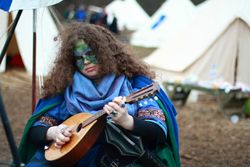Recognition
No edit summary |
No edit summary |
||
| Line 1: | Line 1: | ||
<ic>In the Winter of 377 YE, the Senate amended the way in which Exemplars are recognised, in line with reforms proposed by Hywel Summercrow in a statement of principle put to the Synod on the Autumn of 377 YE.</ic> | <ic>In the Winter of 377 YE, the Senate amended the way in which Exemplars are recognised, in line with reforms proposed by Hywel Summercrow in a statement of principle put to the Synod on the Autumn of 377 YE.</ic> | ||
Revision as of 08:12, 16 May 2014
In the Winter of 377 YE, the Senate amended the way in which Exemplars are recognised, in line with reforms proposed by Hywel Summercrow in a statement of principle put to the Synod on the Autumn of 377 YE.
Paragons and Exemplars are significant figures of virtue from across history who have embodied the virtues and demonstrated their worth.
Only the Imperial Synod has the authority to officially recognise that a figure has met the signs of the paragon and exemplar and thus qualifies as a hero of the faith.
Recognising an Exemplar
To recognise an Exemplar of Virtue requires three steps to be completed:
- A written statement of the Signs that an individual has met
- The recognition of a greater majority of the Assembly whose virtue the individual is believed to exemplify
- The recognition of a lesser majority of the General Assembly that the individual does indeed exemplify that virtue.
Recognising a Paragon
It requires a greater majority of the General Assembly to recognise that an Exemplar of Virtue was, in truth, a Paragon of that Virtue.
